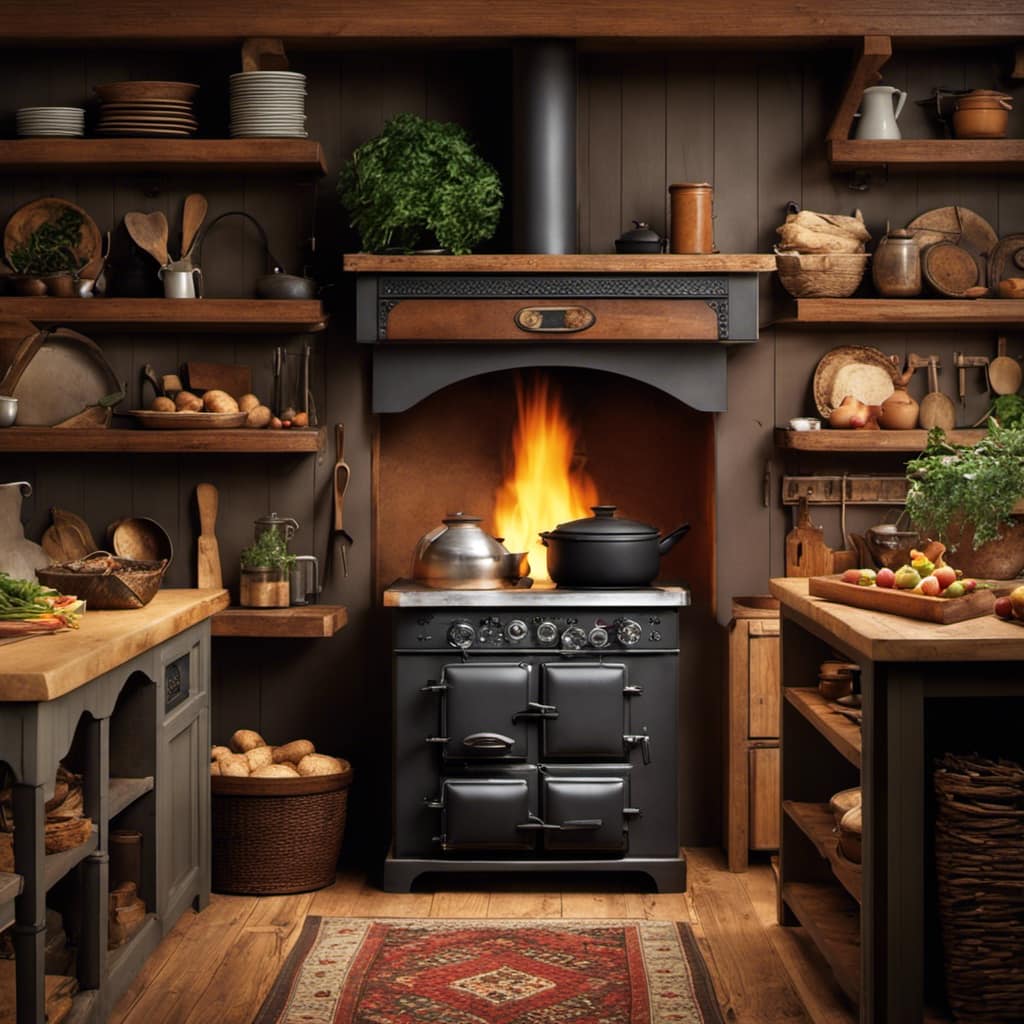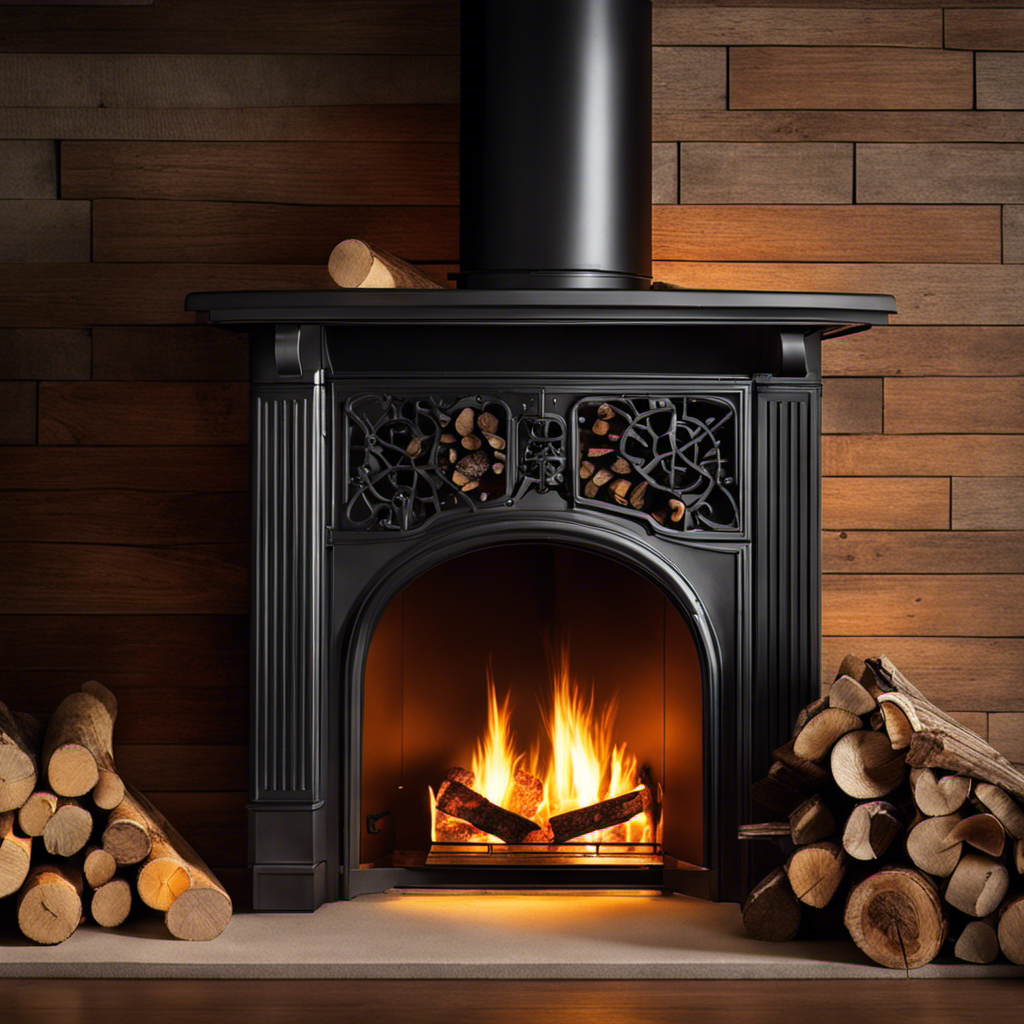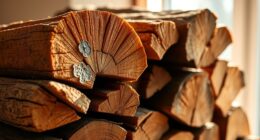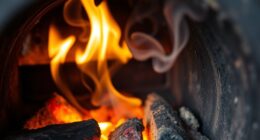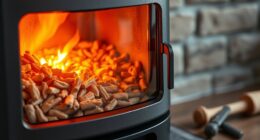As someone who appreciates the cozy warmth of a wood stove, I understand the frustration of trying to start a fire with damp wood. But fear not! With a few simple techniques, you can get past this challenge and enjoy the radiance of a roaring fire, even if your wood isn’t completely dry.
In this article, I will share my expertise on assessing moisture content, preparing your wood stove, building a proper fire lay, and using fire starters to ignite wet wood. Let’s get started!
Key Takeaways
- Assessing the moisture content of the wood is crucial for efficient burning and to avoid issues such as poor combustion, excess smoke, and reduced heat output.
- Preparing the wood stove by cleaning it thoroughly and checking for any damage or air leaks is important before starting a fire with wet wood.
- Building a proper fire lay with damp wood involves splitting the wood into smaller pieces, using hardwoods for longer burn time and more heat, arranging the wood loosely for maximum airflow, and starting the fire lay with dry kindling or tinder.
- Using fire starters strategically placed within the woodpile and ensuring proper ventilation can help ignite wet wood more easily.
Assessing the Moisture Content of Your Wood
I’ll grab my moisture meter to assess the water content of the wood before starting the fire. Evaluating wood moisture is crucial when dealing with wet firewood. Moisture levels above 20% can lead to poor combustion, excess smoke, and reduced heat output.
Alternative firewood options, such as kiln-dried or seasoned wood, can help alleviate this issue. A moisture meter allows me to accurately measure the water content of the wood, ensuring optimal burning conditions. If the moisture level is too high, I may need to consider using a different source of firewood or implementing techniques to dry the wood before burning.
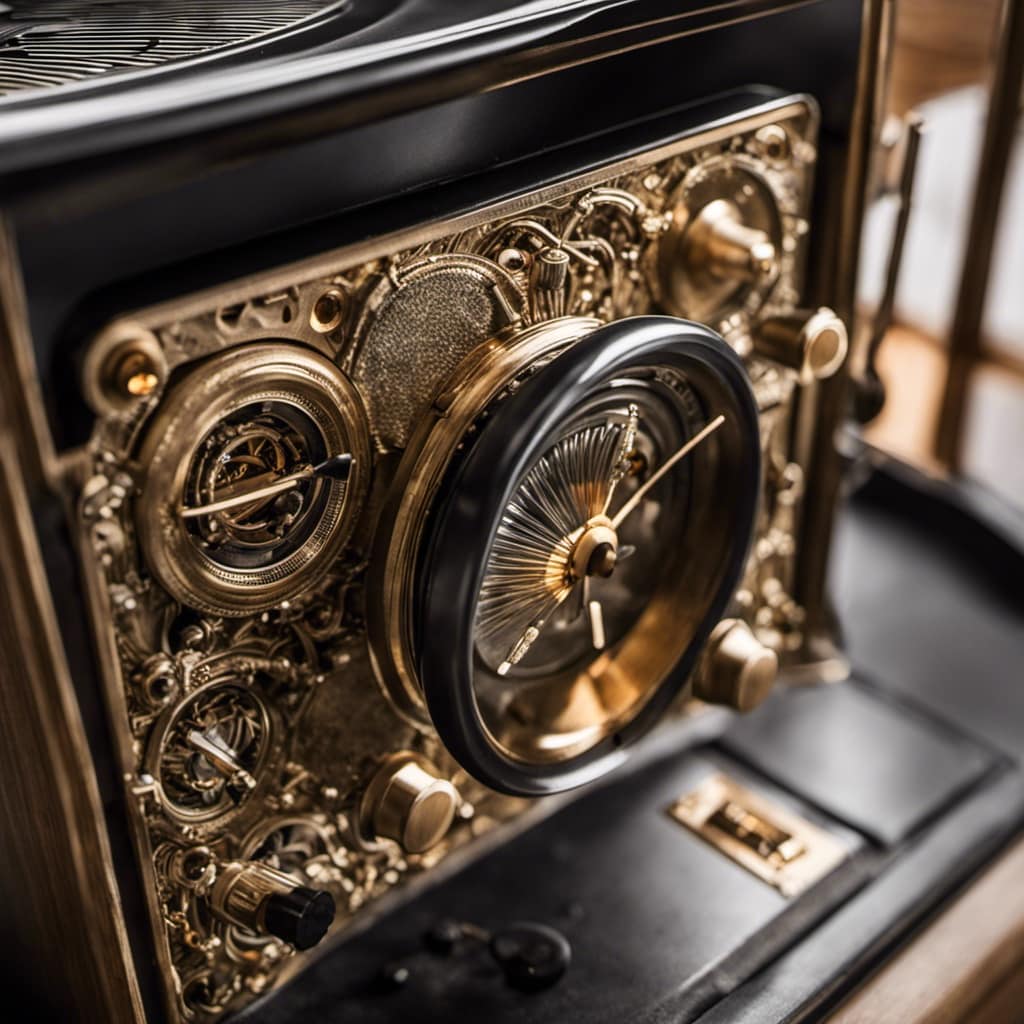
Now that I’ve assessed the moisture content, it’s time to prepare my wood stove for wet wood.
Preparing Your Wood Stove for Wet Wood
How can I effectively prepare my wood stove for wet wood and ensure optimal burning conditions?
When dealing with wet wood, it’s crucial to take certain steps to prevent wood stove corrosion and ensure efficient drying.
Firstly, make sure to clean the stove thoroughly, removing any ash or debris that may impede air circulation. This will allow for better combustion and reduce the risk of corrosion.
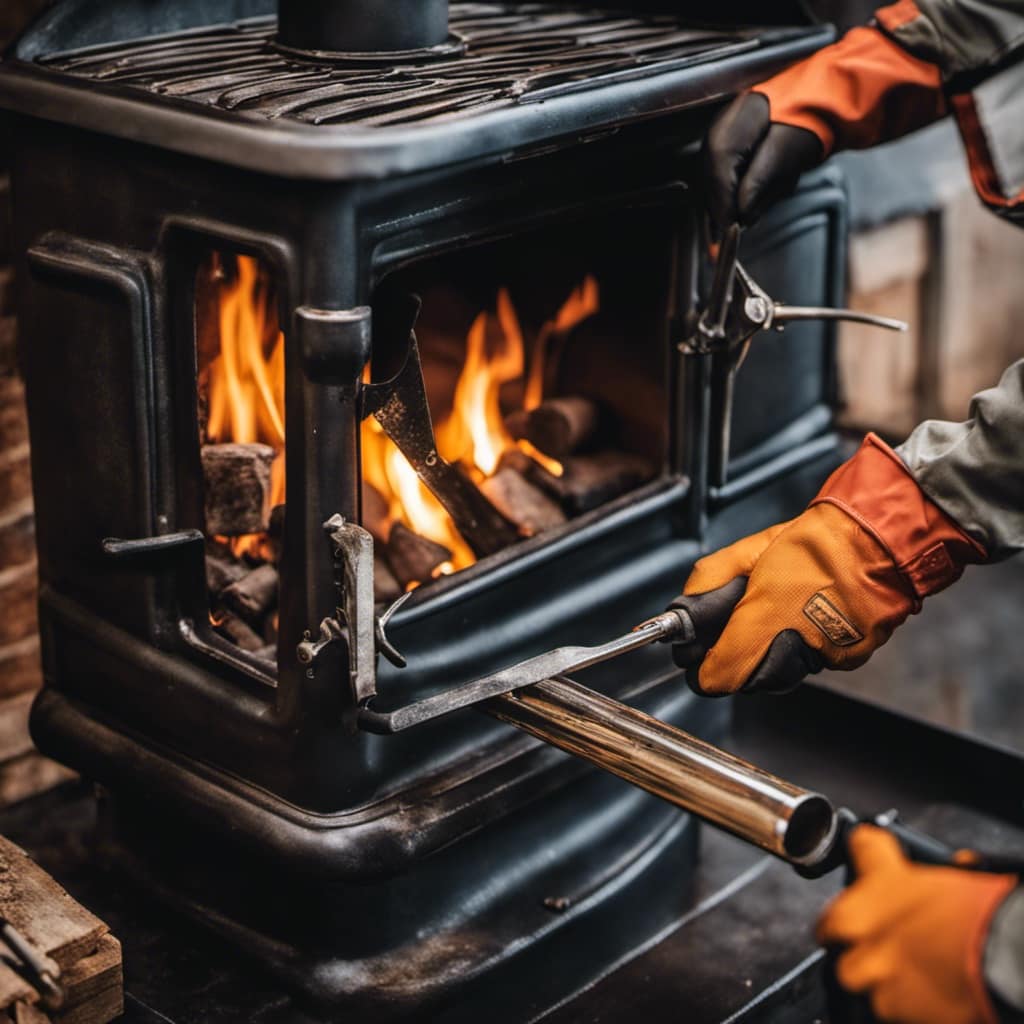
Next, check the gaskets and seals for any signs of wear or damage, as these can contribute to air leaks and decrease performance.
Additionally, consider using a moisture meter to accurately measure the moisture content of the wood before burning. This will help determine the drying time required and prevent excessive smoke or creosote buildup.
Lastly, ensure proper ventilation to facilitate the evaporation of moisture and promote efficient burning.
Building a Proper Fire Lay With Damp Wood
Using some patience and careful stacking, I can successfully build a proper fire lay with damp wood. When faced with wet firewood, it’s crucial to employ effective drying techniques to ensure a successful fire. Here are four key steps to building a proper fire lay with damp wood:
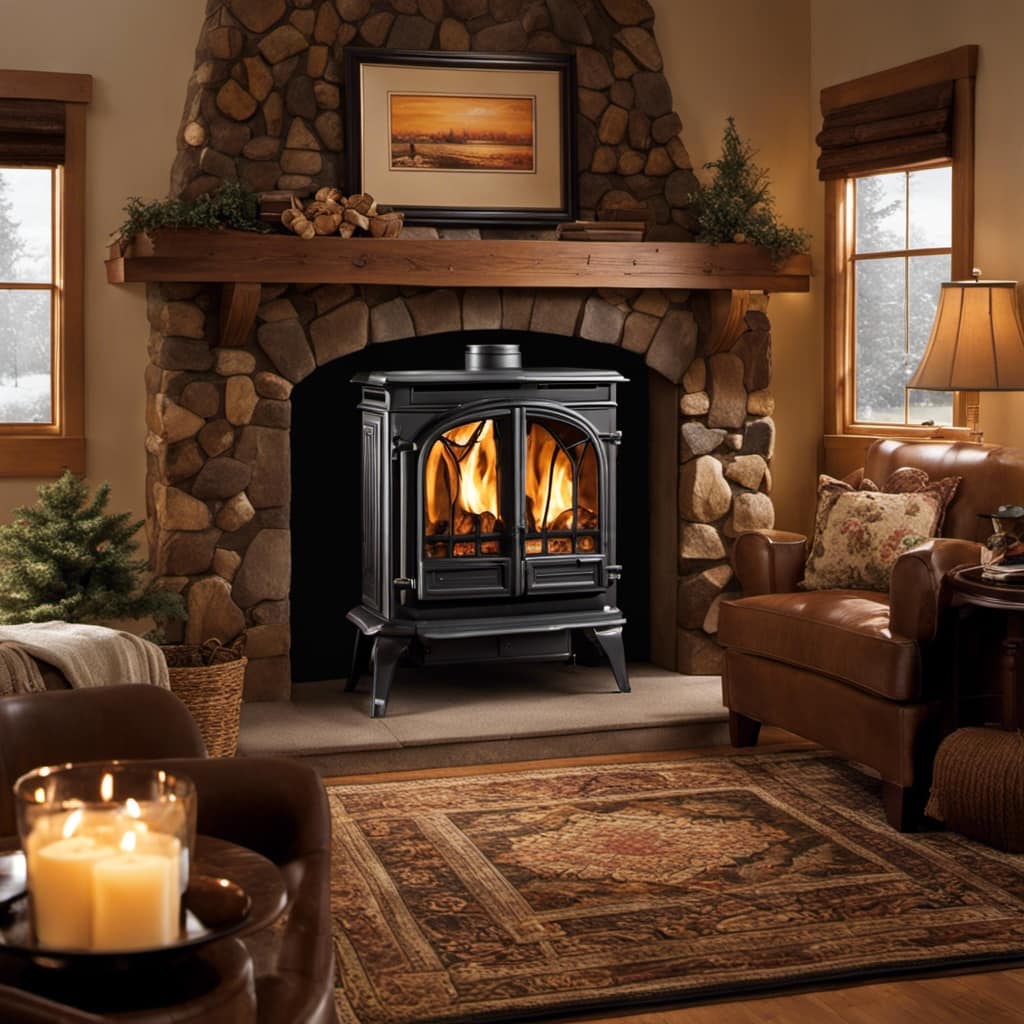
Splitting: By splitting the wet firewood into smaller pieces, you expose more surface area to the air, allowing for faster drying.
Choosing the right type of wood: Opt for hardwoods like oak or maple, as they tend to burn longer and produce more heat, which can help dry out the damp wood more efficiently.
Stacking properly: Arrange the damp wood in a loose and open manner, allowing for maximum airflow. This will aid in the drying process and facilitate better combustion.
Using kindling: Start your fire lay with dry kindling or tinder to provide a source of heat that can ignite the damp wood more easily.
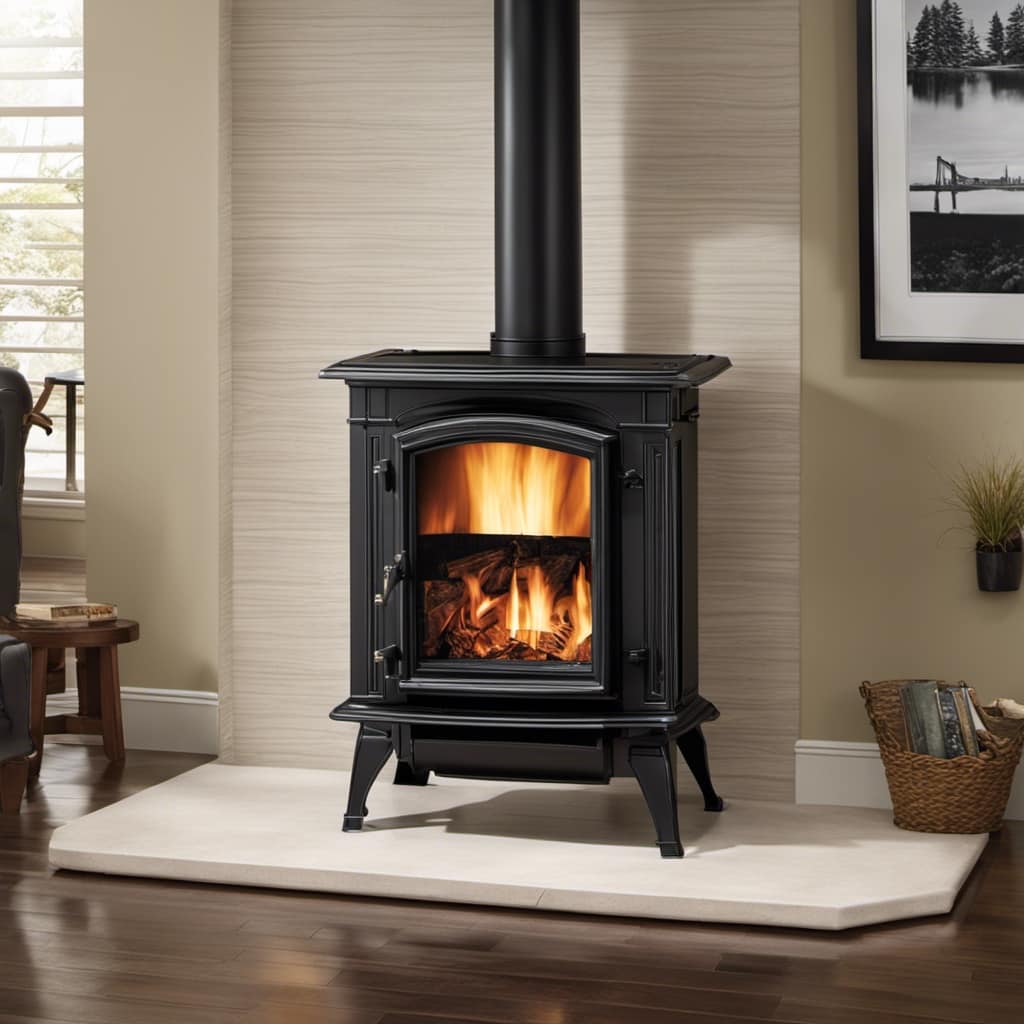
By following these steps, you can increase your chances of successfully igniting wet firewood.
Now, let’s explore the next section on using fire starters to ignite wet wood.
Using Fire Starters to Ignite Wet Wood
Fortunately, with a little patience and some fire starters, I can easily ignite wet wood.
When using alternative fuel sources, such as fire starters, it’s essential to understand the importance of proper ventilation for wet wood.
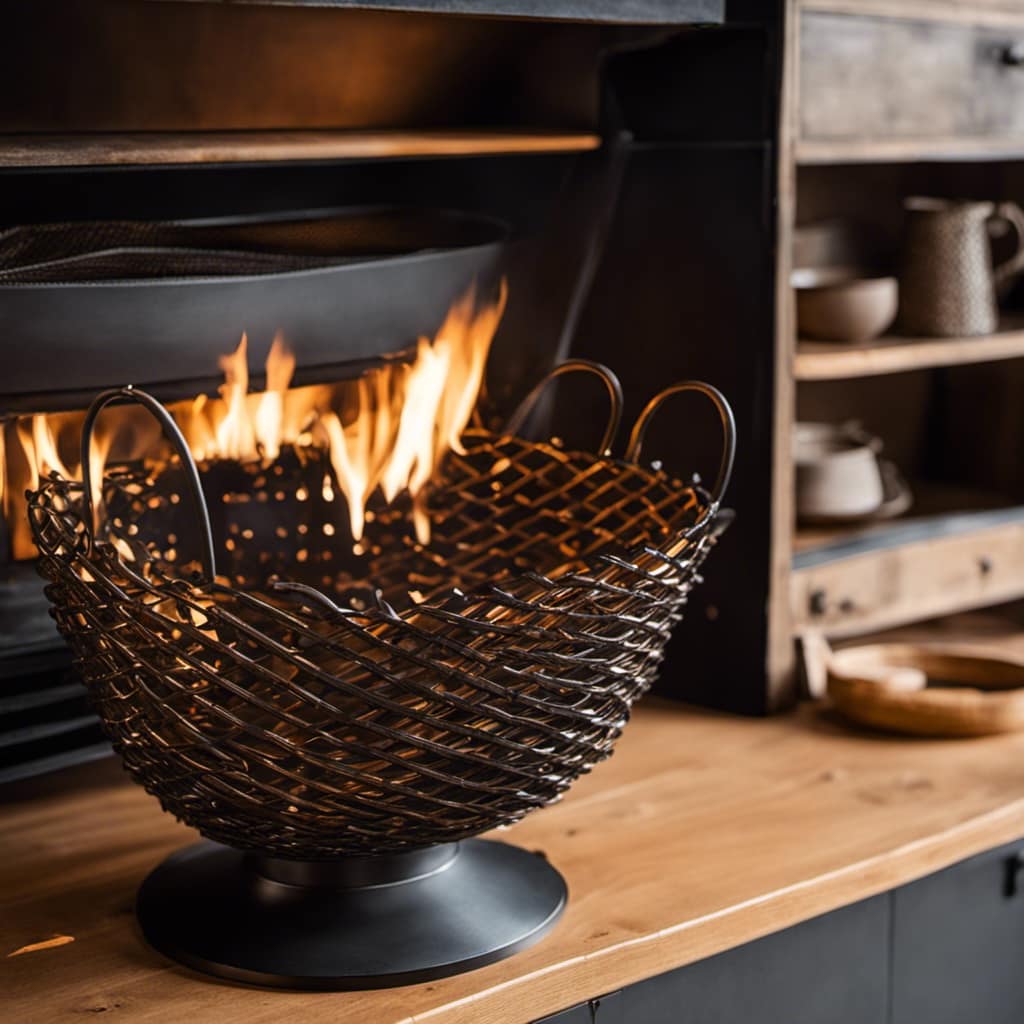
Wet wood can be challenging to ignite due to its high moisture content, which inhibits the combustion process. However, by using fire starters, you can create a hot flame that overcomes the dampness.
It’s crucial to position the fire starters strategically within the woodpile to ensure even distribution of heat.
Additionally, proper ventilation is key to allow for optimal airflow, which aids in drying out the wet wood and promoting combustion.
Maintaining a Strong and Efficient Fire With Wet Wood
I can ensure a strong and efficient fire with wet wood by regularly stoking it and adding dry kindling. When dealing with wet wood, it’s crucial to employ proper drying techniques and troubleshoot any issues that may arise.

Here are four essential tips for maintaining a successful fire with wet wood:
Pre-dry the wood: Before using wet wood, it’s advisable to pre-dry it by storing it in a dry area for several days. This will help reduce its moisture content and make it more combustible.
Gradual introduction: When starting a fire with wet wood, it’s best to introduce it gradually. Begin by using dry kindling and smaller pieces of wood to establish a solid base, gradually adding larger pieces of wet wood as the fire builds.
Adequate airflow: Proper airflow is crucial for maintaining a strong fire. Ensure that your wood stove or fireplace has sufficient ventilation to allow for optimal burning conditions.
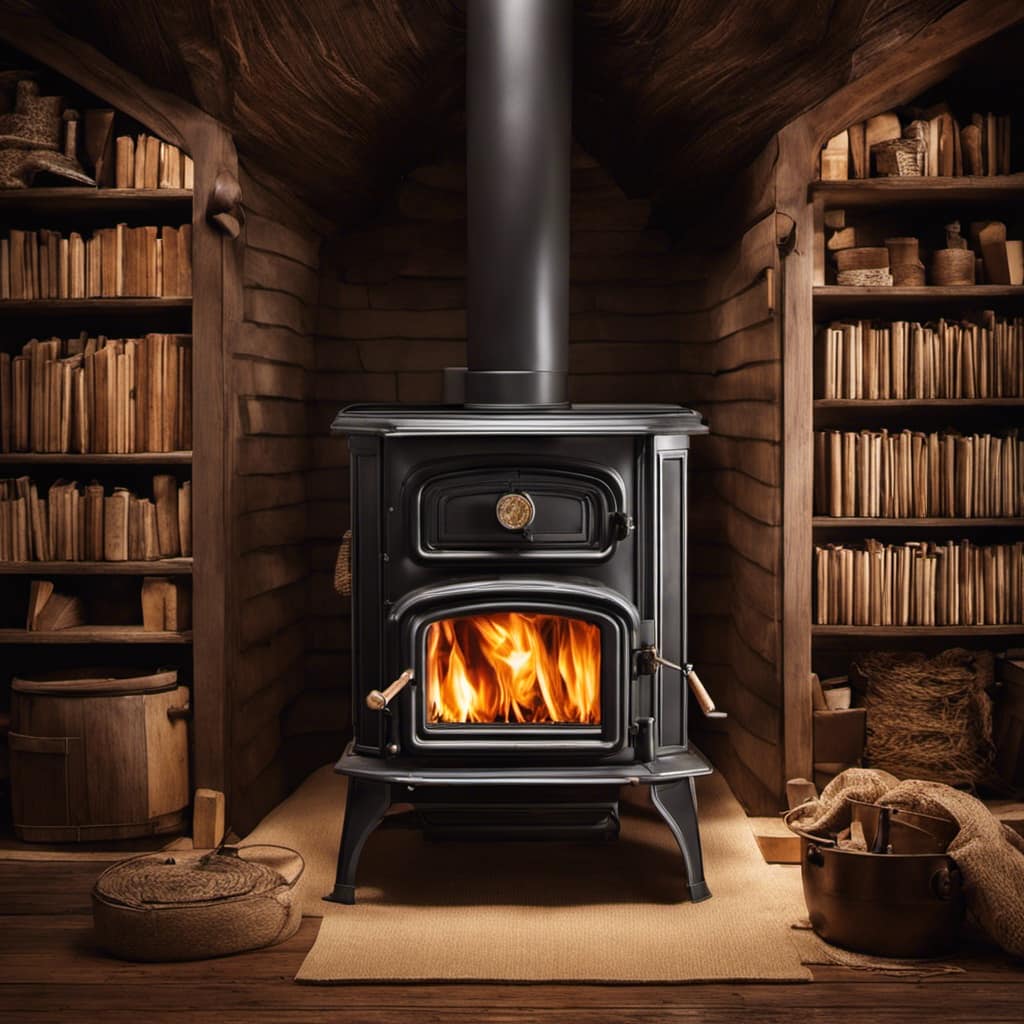
Regular stoking: To keep the fire going, regularly stoke it by adding more dry kindling and adjusting the airflow. This will help maintain a consistent temperature and prevent the fire from smoldering.
Can Starting a Wood Stove with Wet Wood Cause a Downdraft Issue?
Starting a wood stove with wet wood can definitely lead to a downdraft issue, as the moisture in the wood can create excess smoke and inhibit proper airflow. To avoid stopping a downdraft wood stove, it’s important to always use dry wood that is adequately seasoned before starting the fire.
Frequently Asked Questions
Can I Use Wet Wood in a Wood Stove?
I can use wet wood in a wood stove, but it’s not ideal. Starting a wood stove with wet wood can be challenging. To properly dry out wet wood for use in a wood stove, follow these steps.
How Long Does It Take for Wet Wood to Dry Out?
To properly store wet wood, it is important to stack it off the ground and cover it to protect it from rain. To speed up the drying process, ensure good airflow and use a moisture meter to monitor progress.
What Are the Signs of Wet Wood Not Burning Properly in a Wood Stove?
When troubleshooting wet wood in a wood stove, signs of wet wood not burning properly include excessive smoke, difficulty in starting and maintaining a fire, and a lack of heat output.
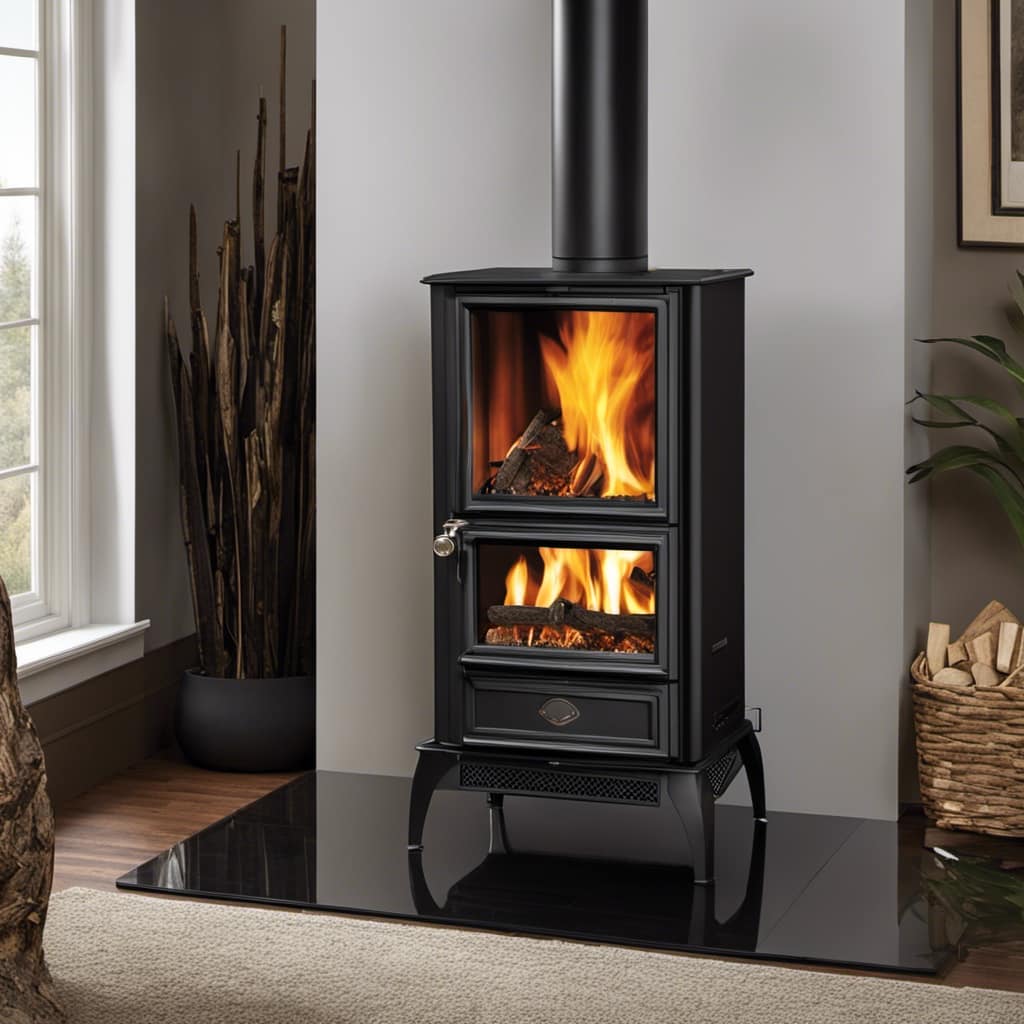
Are There Any Safety Concerns When Using Wet Wood in a Wood Stove?
Safety precautions must be taken when using wet wood in a wood stove. Wet wood can lead to excessive smoke, creosote buildup, and increased risk of chimney fires. Properly seasoned wood is recommended for safe and efficient wood stove use.
Can I Mix Wet and Dry Wood Together in a Wood Stove?
Can I mix wet and dry wood together in a wood stove? While it may seem convenient, it’s not recommended. Using dry wood in a wood stove has numerous benefits such as easier ignition and more efficient burning.
Conclusion
Starting a wood stove with wet wood may seem like an impossible task, but with the right techniques, it can be done! By assessing the moisture content of your wood and preparing your stove, you can increase your chances of success. Building a proper fire lay and using fire starters will also help you ignite wet wood and maintain a strong and efficient fire. Don’t let wet wood dampen your spirits. Follow these steps and conquer the challenge with ease!
Growing up surrounded by the vast beauty of nature, Sierra was always drawn to the call of the wild. While others sought the comfort of the familiar, she ventured out, embracing the unpredictable and finding stories in the heartbeat of nature.
At the epicenter of every remarkable venture lies a dynamic team—a fusion of diverse talents, visions, and passions. The essence of Best Small Wood Stoves is crafted and refined by such a trio: Sierra, Logan, and Terra. Their collective expertise has transformed the platform into a leading authority on small wood stoves, radiating warmth and knowledge in equal measure.




